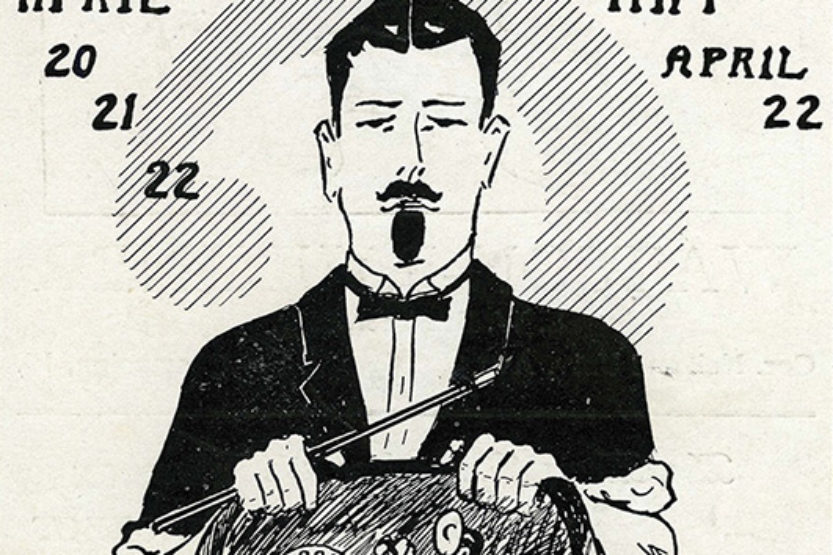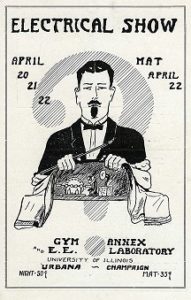Ingenious: Setting off sparks
 Part science, part circus, the Electrical Show attracted national recognition in the early 20th century. (Image courtesy of UI Archives)
Part science, part circus, the Electrical Show attracted national recognition in the early 20th century. (Image courtesy of UI Archives) If you picked up a flier for the 1936 University of Illinois Electrical Show, you might have thought you were reading a circus promotion: “Come and SEE a 10-foot spark! HEAR an electrical echo of your voice! FEEL the fever machine raise your body temperature! TASTE an electrocuted hot dog!”
The annual show, a forerunner to the more enduring College of Engineering Open House, was a medley of innovation and quirky demonstrations. Shows featured displays such as the “Ghastly Talking and Singing Skull” and the “Kiss-o-meter.” But there were also serious presentations on talking motion pictures, telephone systems, X-rays, wireless telegraphs and a budding new technology known as “television.”
UI’s first Electrical Show was held in 1907. By 1921, the event had attracted such national recognition that “large electrical manufacturers and utility companies were eager to exhibit their products,” The Daily Illini reported.
In addition to showcasing current technology, the event made bold predictions about what was in store for the future. At the 1936 show, people sat in a dark booth, where a spotlight scanned them to create a crude televised image.
“Is television just around the corner?” asked engineering faculty member H.A. Brown. “We do not know as yet.”
Although there was no shortage of serious science, always popular were the circus-style stunts, such as the “Human Welder.” In this demonstration, a student strapped a large electrical conductor to each hand “and by bringing the opposite ends of carbon rods together, he will draw an arc through his body. No harmful effects have been observed.”
However, the 1930 promotional materials went on to state, “In the event of the performer getting ‘cold feet,’ there are three or four other assistants who can take his place.”
Sources: The Daily Illini, March 2, 1907; The Daily Illini, February 11, 1910; The Electrograph, February 1907; Electrical Show programs, 1930 and 1936; and “The Electrical Show: Inventions of the Past, Present and Future Revealed,” University of Illinois Archives, March 14, 2014.


